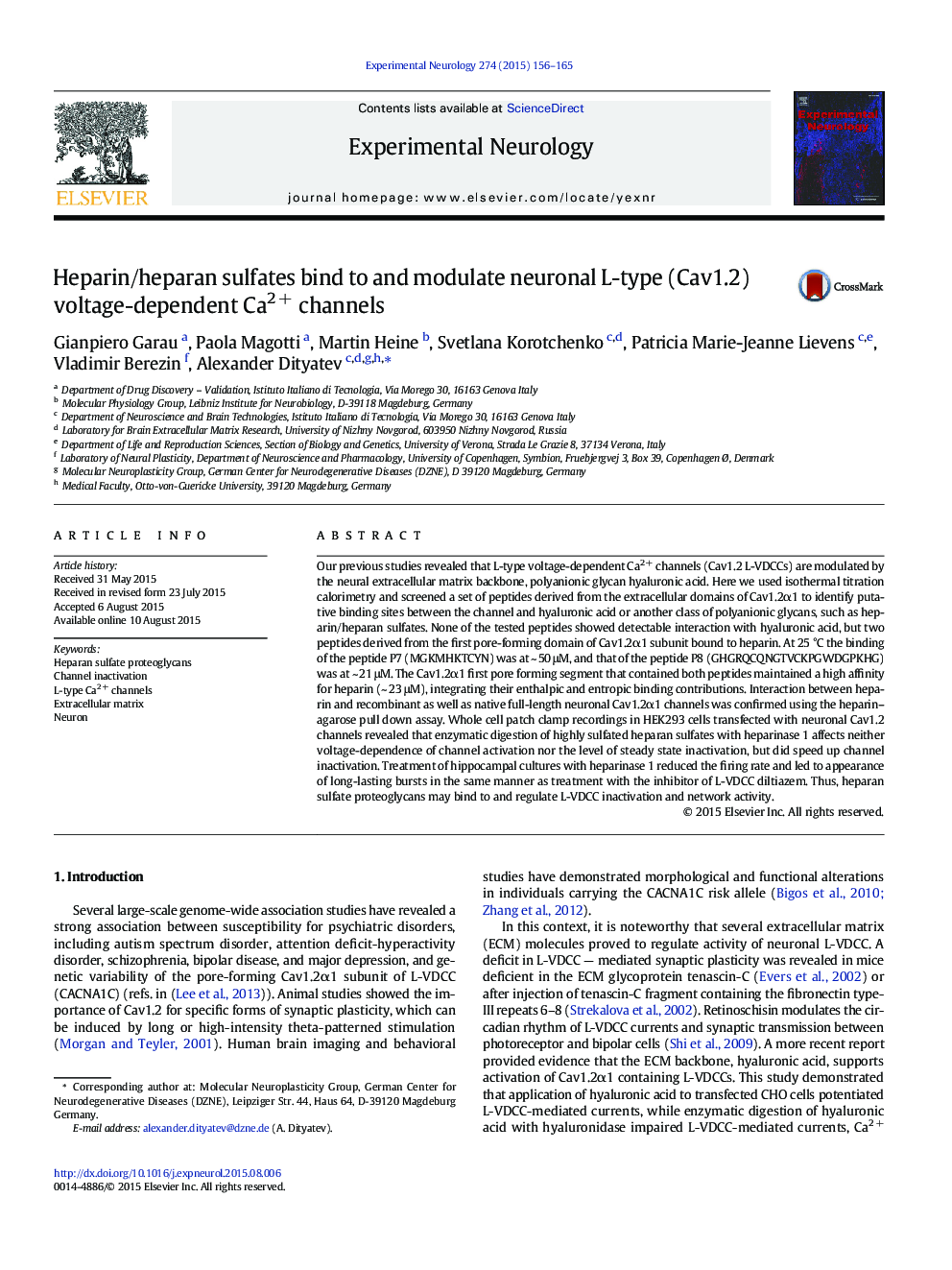| کد مقاله | کد نشریه | سال انتشار | مقاله انگلیسی | نسخه تمام متن |
|---|---|---|---|---|
| 3055341 | 1186479 | 2015 | 10 صفحه PDF | دانلود رایگان |

• There are two heparin binding sites at the first pore forming domain of Cav1.2α1.
• Cav1.2α1 is pulled down by heparin–agarose.
• Removal of heparan sulfates with heparinase 1 accelerates Cav1.2α1 inactivation.
• A blocker of L-VDCCs phenocopies the heparinase effects on neural network activity.
Our previous studies revealed that L-type voltage-dependent Ca2 + channels (Cav1.2 L-VDCCs) are modulated by the neural extracellular matrix backbone, polyanionic glycan hyaluronic acid. Here we used isothermal titration calorimetry and screened a set of peptides derived from the extracellular domains of Cav1.2α1 to identify putative binding sites between the channel and hyaluronic acid or another class of polyanionic glycans, such as heparin/heparan sulfates. None of the tested peptides showed detectable interaction with hyaluronic acid, but two peptides derived from the first pore-forming domain of Cav1.2α1 subunit bound to heparin. At 25 °C the binding of the peptide P7 (MGKMHKTCYN) was at ~ 50 μM, and that of the peptide P8 (GHGRQCQNGTVCKPGWDGPKHG) was at ~ 21 μM. The Cav1.2α1 first pore forming segment that contained both peptides maintained a high affinity for heparin (~ 23 μM), integrating their enthalpic and entropic binding contributions. Interaction between heparin and recombinant as well as native full-length neuronal Cav1.2α1 channels was confirmed using the heparin–agarose pull down assay. Whole cell patch clamp recordings in HEK293 cells transfected with neuronal Cav1.2 channels revealed that enzymatic digestion of highly sulfated heparan sulfates with heparinase 1 affects neither voltage-dependence of channel activation nor the level of steady state inactivation, but did speed up channel inactivation. Treatment of hippocampal cultures with heparinase 1 reduced the firing rate and led to appearance of long-lasting bursts in the same manner as treatment with the inhibitor of L-VDCC diltiazem. Thus, heparan sulfate proteoglycans may bind to and regulate L-VDCC inactivation and network activity.
Figure optionsDownload as PowerPoint slide
Journal: Experimental Neurology - Volume 274, Part B, December 2015, Pages 156–165